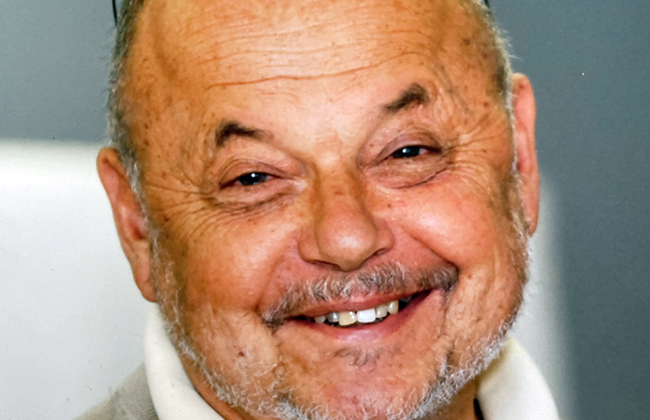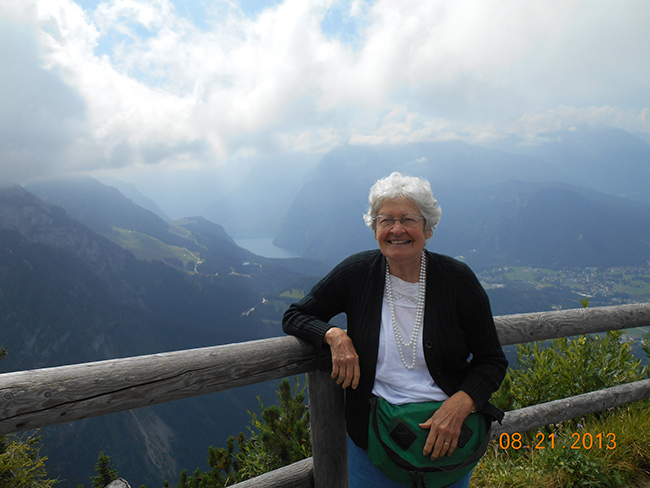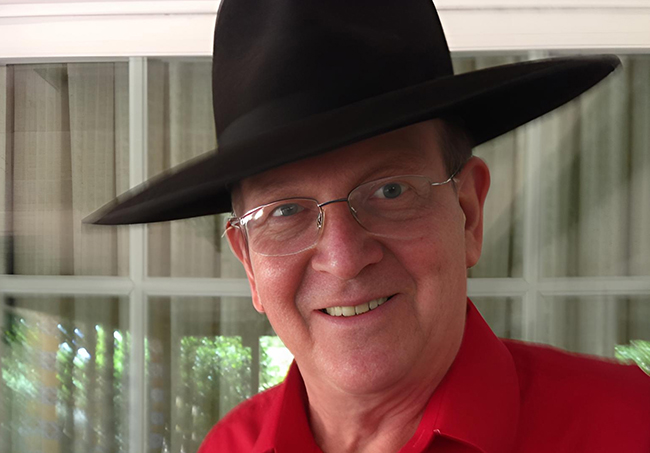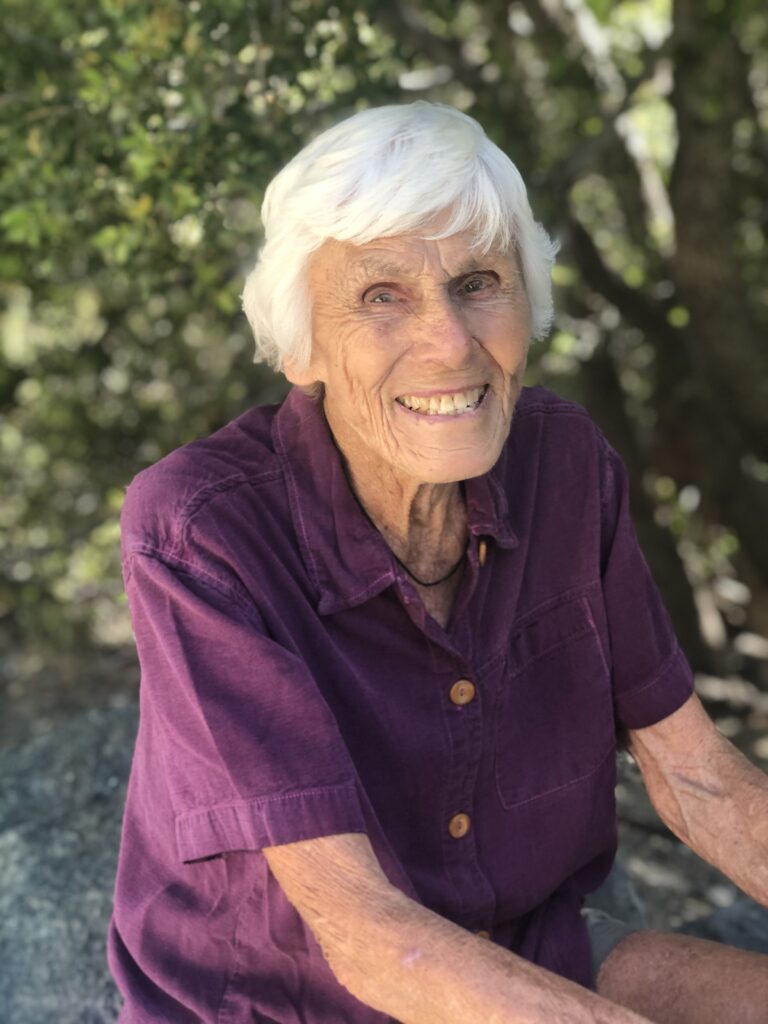Obituary: Richard Young
Richard “Dick” Pierre Young died at his Claremont home, under hospice care and with his family by his side, on January 20, 2016. The cause of death was acute respiratory failure due to pneumonia and other complications of vascular dementia. He was 89.
He was born in 1926 in Pierre, South Dakota, the son of William Pierre Young and Mary Beatrice Young (née Hall). His parents were homesteaders with a sheep ranch about five miles from Wendte, South Dakota, 30 miles west of Pierre. They had 3000 ewes at the peak of their operation. Dick—known as “Bud” in those days—attended one-room country schools, together with his brothers Charles and Donald, born in 1923 and 1928. In the first years, the two older boys remained at the schoolhouse during the week to avoid travel in harsh weather, and in turn their teacher stayed with the family on weekends, helping out at the ranch.
When the Great Depression and the Dust Bowl made continued ranching impossible, the family moved first to Rapid City and then in 1940 to Hot Springs in the Black Hills, where Dick spent his first three years of high school. He very much enjoyed town life. He was close to his five girl cousins, who remembered his money-making schemes with amusement. He would get up early to trap critters to sell their furs to Sears Roebuck, and at least once he had to be sent home from school after he showed up to class hoping that no one would notice the evidence of his close encounter with a skunk.
Because of wartime job opportunities, the family moved in 1943 to Portland, Oregon where Dick completed his final year of high school and enlisted in the US Navy Air Corps. He studied for one year at Willamette University under the V-5 Navy College Training Program for aviation cadets, and in the summer of 1945 began pre-flight training in Alameda, California.
With the war over, he took the option of leaving the navy and returned to Hot Springs. He was hired as rear chainman on a survey crew for the Soil Conservation Service, working on an irrigation project. Mr. Young later shared a future-shaping epiphany he had while on the job.
“We were out there on the ice-cold prairie and the snow was blowing and we were freezing to death and a little car came driving out,” he recalled. “And some guy in the party, the chief, goes over and talks to him, and the guy doesn’t even get out of the car! Heated car. So when he left, I asked the party chief, ‘Who was that?’ He answered, ‘That’s the engineer.’ And I said, ‘That’s what I want to be.’ That’s the truth! That’s when I decided to become an engineer.”
Mr. Young enrolled in the spring semester at the South Dakota School of Mines and Technology and graduated with the class of 1948 with a Bachelor of Science in civil engineering. He always said that if it were not for the GI Bill, he would never have been able to go to college. He was just one of the millions of veterans who benefited from this program, which contributed enormously to building the nation’s middle class, creating postwar prosperity and paving the way for long-term economic growth.
After a few years with the Bureau of Reclamation in Rapid City, Mr. Young moved to Los Angeles where he met his future wife, the former Marjorie Louise Mather, a young artist who worked at Buzza Cardozo as a greeting card designer. He began his career with the Army Corps of Engineers, reaching the position of chief of construction/operations for the LA District. He was appreciated for his years of innovative, ethical leadership and for his immediate response and excellent assistance and cooperation with other organizations whenever natural disasters struck or threatened.
He retired from the Corps in 1982. Further on, he had the pleasure of working as construction manager at Pomona College for 10 years. Having car-pooled from Claremont to Los Angeles since the early 1960s, he enjoyed the change of pace and being able to walk to work. Meanwhile, he continued volunteering his engineering services to Habitat for Humanity well into his 80s.
Dick and “Marjie” were devoted to each other. Married in 1953, they lived first in San Gabriel and then in Phoenix, Arizona before settling in Claremont in 1961, where they raised their seven children. In 1967 the family moved to a grove house on Villanova Drive, and Dick and Marjie worked on multiple projects together to make it their own. They made stained glass windows, transformed a porch into a studio and designed and built a couple of bay windows. Some things became hilarious only later (like the time Dick forgot to close a bottle of salad dressing and shook it onto wallpaper that had been hung that very day), but it was always fun watching them be silly together, sharing jokes and writing limericks. They shared the grief of losing their son Tony in 1996, and the joy of becoming grandparents to 20 grandchildren and 12 great-grandchildren.
One of the family’s most treasured memories is their 1970 camping trip to the East Coast in their nine-seater station wagon. The kids took turns facing backwards in the dreaded rear seat, keeping an eye on the tiny trailer dragging behind. They helped navigate using large paper maps, and everyone had their say when it came to choosing the best campground each night. Barney the Labrador rode happily in his space between the back seats, drooling on each kid in turn, and was always the first one out of the car, the instant somone opened a door.
Mr. Young had a curious mind and was always learning something new. When his children were young, they were convinced he knew everything and how to do everything—except maybe art and picking out ties, both of which were their mother’s department. Growing up on the prairie meant learning a range of practical skills, but there was another reason for his encyclopedic knowledge: for lack of other reading materials during the long winters, he had meticulously made his way through every volume of Compton’s Pictured Encyclopedia by the time he was 10 years old. As an adult he continued to cultivate interests in history and politics, math and astronomy, later listening to audio books while exercising. He purchased his first personal computer in the late 1970s, learning to use it for engineering calculations and drawings and getting an early start on his rich collection of tangled cables.
Taking advantage of his need to travel for work, Mr. Young learned to pilot small planes. He loved camping with his family and fishing with his buddies, but most of all he loved teaching kids to fish. He first tried skiing fairly late in life. He started out with cross-country, cautious due to his age, but then at 60 he moved on to downhill and there was no stopping him. He exercised all year just to be able to continue skiing, hitting the slopes for the last time in his 86th winter. He and Marjie traveled for two decades with the “Over the Hill Gang,” and took the grandkids on winter trips to Mammoth and Yosemite. They were active members of Our Lady of the Assumption Catholic Church in Claremont for many years, where they made treasured friends and took a particular interest in social justice issues.
Dick was a kind man who always encouraged people to think for themselves. He kept his smile till the very end, and he will always be remembered for his stories. He talked about his father, who learned so many useful things from the Ojibwe people in Minnesota, and his mother, a former school teacher turned rancher, who loved to read and was thrilled to move back to town near a library. He talked about the time when, as a small child, his dad and uncle quickly lifted him up by the hands over a rattlesnake, narrowly saving him from getting bit. There were the usual tales about slogging through the snow to school. (Being an engineer, he never claimed it was uphill both ways.) But he also talked about freight-hopping with his brother to find summer work in the wheat fields of eastern Washington and then continuing all the way to the coast. And of course there were the fish stories, some, but not all, corroborated.
He was preceded in death by his brothers Charles and Donald and his son Anthony. He is survived by his wife of 62 years, Marjorie Young of Claremont, his daughter Andrea Harrington (Patrick) of Claremont, his daughter Lisa Young Prendergast of Davis, California, his daughter Julie Young Andrews (Jim) of Clovis, California, his son Christopher Young (Katharina Pierini) of Pescadero, California, his daughter Maureen Young (Alessandro Nerdi) of San Casciano in Val di Pesa, Italy and his daughter Robbie Young Almeida (Deladier) of Davis. He also leaves 20 grandchildren and 12 great-grandchildren.
The family sends its sincere thanks to the staff of Kaiser Permanente and to their friends for their loving support.










0 Comments